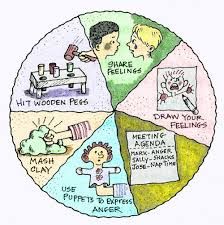Login
Signup
Tantrum Or Trauma
Teaching children self-control in Rio’s favelas

 When a diva storms off stage or out of a TV interview, we love them for it, we’re even disappointed if they don’t. When a child walks out of a classroom because they don’t get their own way, it’s not acceptable, after all, we don’t want a generation of divas – one Mariah Carey is plenty.
When a diva storms off stage or out of a TV interview, we love them for it, we’re even disappointed if they don’t. When a child walks out of a classroom because they don’t get their own way, it’s not acceptable, after all, we don’t want a generation of divas – one Mariah Carey is plenty.
Yet why do some children behave in this way and how do we at Edumais deal with it?
Discipline is needed to achieve a healthy, respectful learning environment, we encourage and help our students to develop self-control, which can be difficult for them, considering many live in stressful environments.
Dr Daniel Siegel, a professor of psychiatry, whose work in child development is an inspiration for us at Edumais, uses the hand as a brain analogy, with a closed fist being in control – the fingers representing regulators covering the thumb, which represents behaviour and emotion – but as we begin to lose control or flip the lid, the hand opens, exposing our emotions naked to the world without a filter. Many children in the communities we work in have under-developed filters, so they’re prone to very reactionary fight, freeze or flight instincts.
Children can often walk out of a class when they have under-developed behavioral control, but I use Positive Discipline to help reassure and bring them back. One example, we ask children not to interrupt when others are talking. We do this by bringing a finger to our lips, a simple non-verbal strategy. We don’t raise our voices, blame, shame or punish. We want the children to respect one another and the classroom to be a safe place for them to learn.
But even this soft discipline can lead to a child storming out.
I follow them out the class, sit down with them and reassuringly touch their backs, through which I can feel the tension easing. I acknowledge their feelings and ask if they know where the tension starts in their bodies. I tell them that when I feel my lid flipping, I feel it sometimes disconnecting in my head. This can give them awareness. Children will share that they feel their heads getting hot and their breathing becoming irregular, for example. I show them a square breathing exercise, using my fingers; when the finger goes up: breath in, horizontal keep the breath, the finger goes down, exhale, horizontal keep the breath. I ask them if the next time they feel tension rising, they can start the breathing exercise in the classroom to calm themselves down.
To my joy, many children take this simple strategy on and I see them doing it in classes. We actually see them developing and learning coping mechanisms right before our eyes. This is not only incredibly rewarding for the volunteers, but most importantly, for the children it’s a real step to having control of their behaviour, their learning and their futures.
Leave a Comment:
You must be logged in to post a comment.